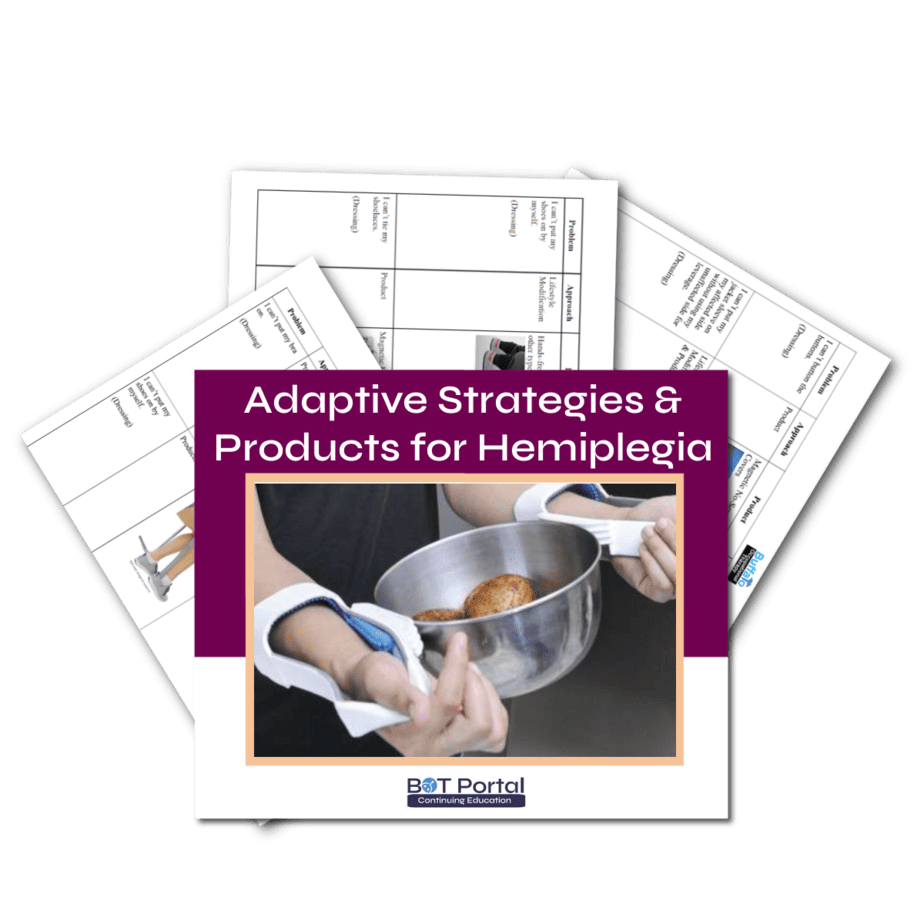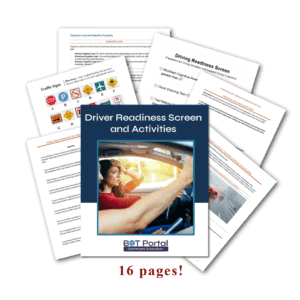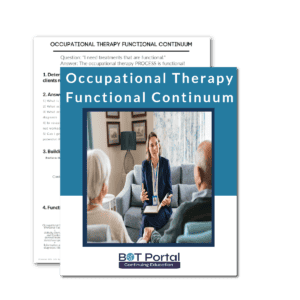Description
Adaptive Equipment OT
Download the pdf for “Adaptive Equipment OT” for a printable packet to use with your patient or students to explain how occupational therapy can help an individual who may need to perform functional activities one-handed or modified. This list of items are items that our patients at Buffalo Occupational Therapy have used and recommended. This resource offers a list of equipment, adaptations, and brainstorming approaches to use with your clients to guide a conversation of things they may want to consider post-discharge as they integrate into daily life with functional changes.
What is Adaptive Equipment?
Adaptive equipment, also known as assistive technology or assistive devices, refers to specialized tools, devices, or modifications designed to enhance the functional abilities of individuals with disabilities or limitations. These devices are tailored to meet the unique needs and goals of each individual, enabling them to perform tasks, navigate environments, and participate in activities that might otherwise be challenging or impossible.
Key Components of Adaptive Equipment in OT:
- Assessment: OTs conduct comprehensive assessments to evaluate an individual’s functional abilities, limitations, and environmental barriers. This assessment includes gathering information about the individual’s goals, preferences, and specific challenges related to daily activities.
- Individualization: Adaptive equipment solutions are highly individualized, taking into account each person’s unique needs, abilities, and personal goals. OTs collaborate closely with individuals, caregivers, and other relevant professionals to identify the most appropriate equipment and adaptations for each situation.
- Customization: Many adaptive equipment solutions can be customized or modified to better fit the individual’s body size, functional capabilities, and personal preferences. OTs work with individuals to ensure that equipment is comfortable, functional, and conducive to independent use.
- Education and Training: OTs provide comprehensive education and training to individuals and their caregivers on how to safely and effectively use adaptive equipment. This includes instruction on proper techniques, maintenance procedures, and strategies for incorporating equipment into daily routines.
- Environmental Considerations: OTs assess environmental factors such as home, work, school, and community settings to identify potential barriers and opportunities for adaptation. They recommend modifications and assistive devices that promote accessibility, safety, and independence in various environments.
Benefits of Adaptive Equipment in OT:
- Increased Independence: Adaptive equipment enables individuals to perform tasks and activities independently, reducing reliance on others for assistance and enhancing feelings of autonomy and self-confidence.
- Improved Safety: By providing support and assistance with mobility, transfers, and other tasks, adaptive equipment helps minimize the risk of falls, accidents, and injuries, thereby promoting safety and well-being.
- Enhanced Functionality: Adaptive equipment enhances individuals’ ability to engage in a wide range of daily activities, including self-care tasks, mobility, communication, leisure pursuits, and vocational activities.
- Facilitated Participation: By addressing physical barriers and limitations, adaptive equipment promotes active participation in meaningful occupations, social interactions, and community engagement, fostering a sense of belonging and connection.
- Quality of Life: Ultimately, adaptive equipment plays a crucial role in improving individuals’ overall quality of life by empowering them to live more independently, pursue their goals, and participate fully in society.
What is included?
10 pages of modifications and links to suggest to client for adapted ways of performing daily life activities
Other helpful links:
Check out BOT Portal: Resource Site for Occupational Therapy Students and Practitioners




